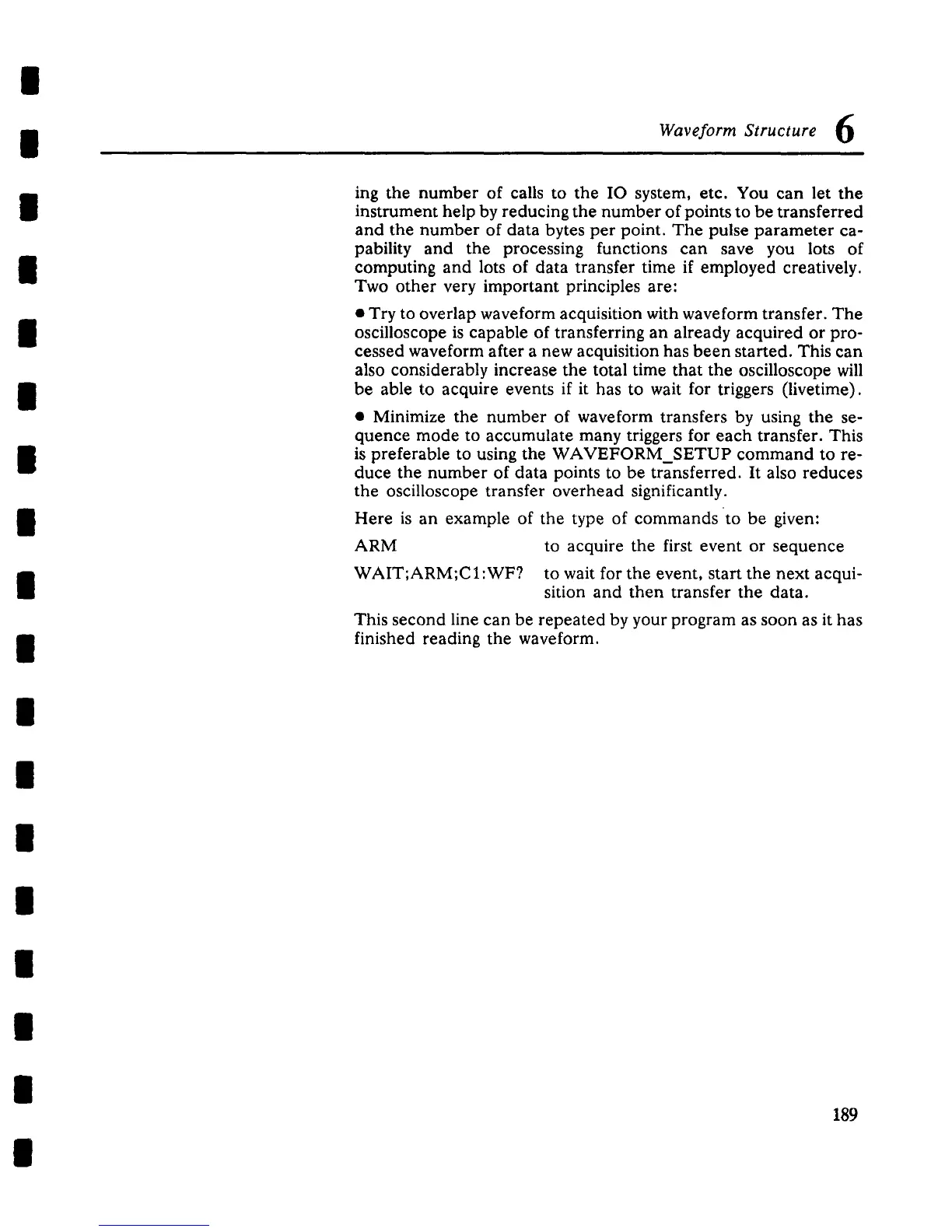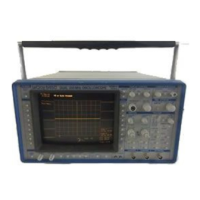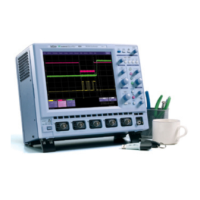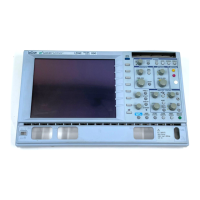|
|
Waveform Structure 6
ing the number of calls to the IO system, etc. You can let the
instrument help by reducing the number of points to be transferred
and the number of data bytes per point. The pulse parameter ca-
pability and the processing functions can save you lots of
computing and lots of data transfer time if employed creatively.
Two other very important principles are:
¯ Try to overlap waveform acquisition with waveform transfer. The
oscilloscope is capable of transferring an already acquired or pro-
cessed waveform after a new acquisition has been started. This can
also considerably increase the total time that the oscilloscope will
be able to acquire events if it has to wait for triggers (livetime).
¯ Minimize the number of waveform transfers by using the se-
quence mode to accumulate many triggers for each transfer. This
is preferable to using the WAVEFORM_SETUP command to re-
duce the number of data points to be transferred. It also reduces
the oscilloscope transfer overhead significantly.
Here is an example of the type of commands to be given:
ARM to acquire the first event or sequence
WAIT;ARM;CI:WF? to wait for the event, start the next acqui-
sition and then transfer the data.
This second line can be repeated by your program as soon as it has
finished reading the waveform.
189

